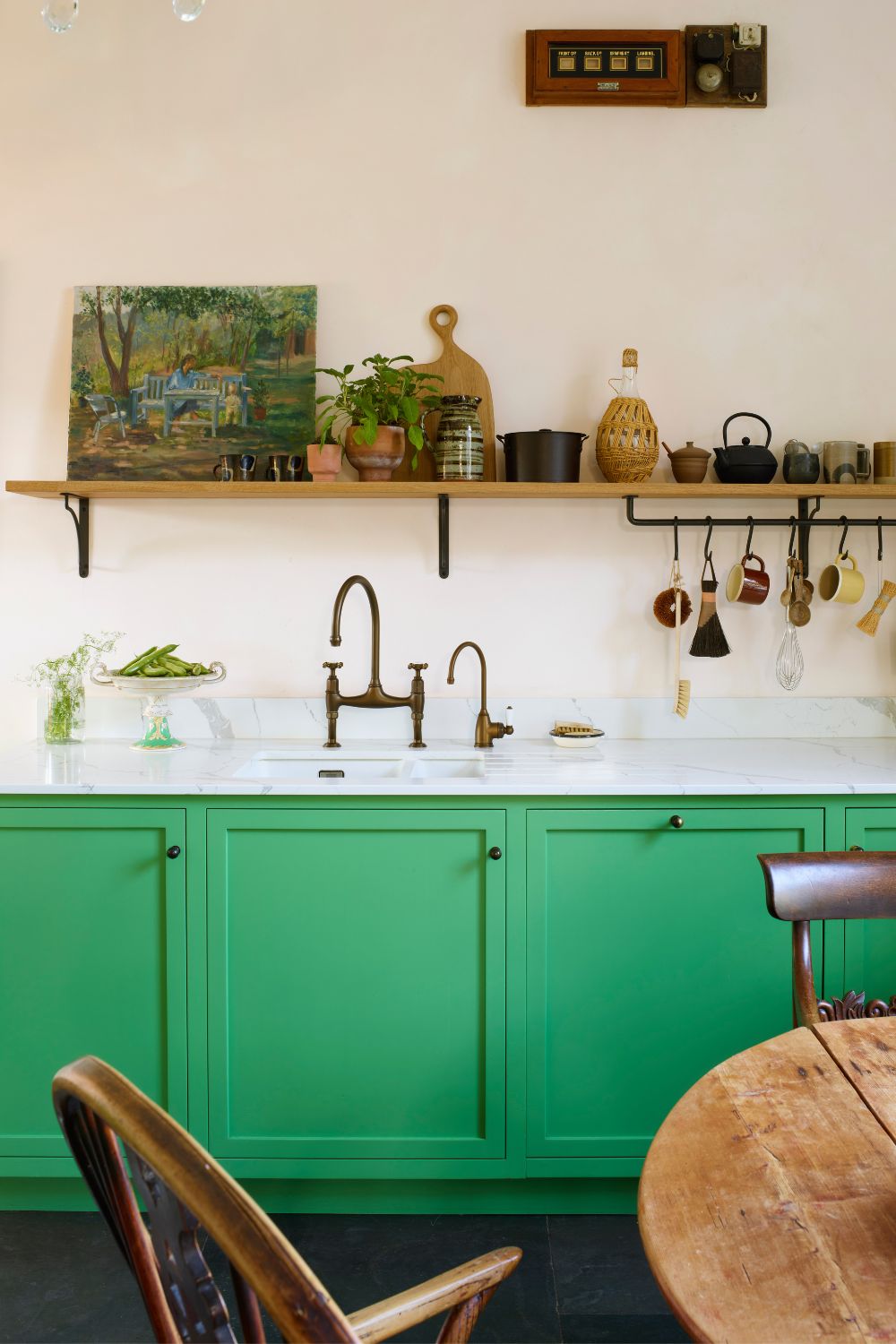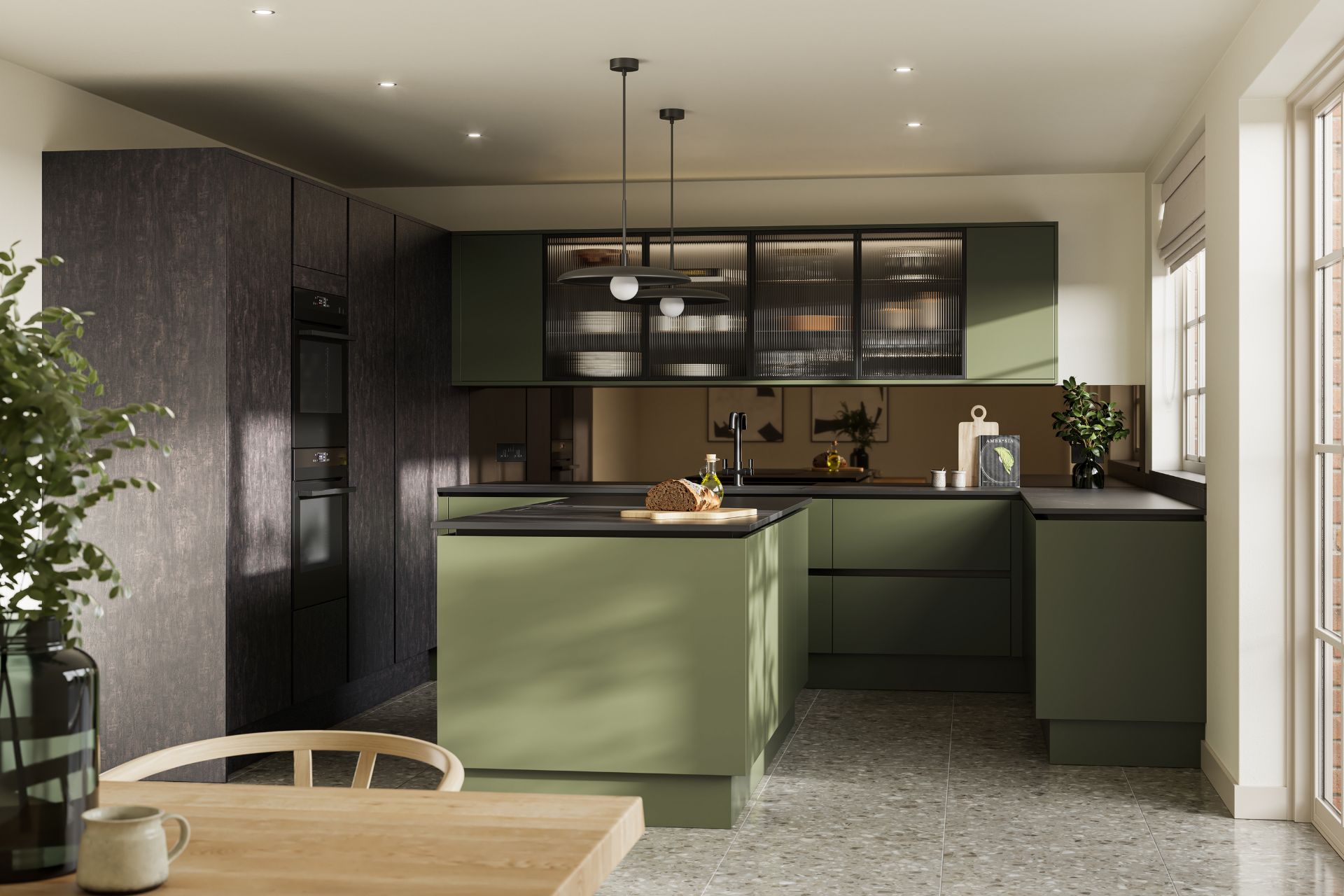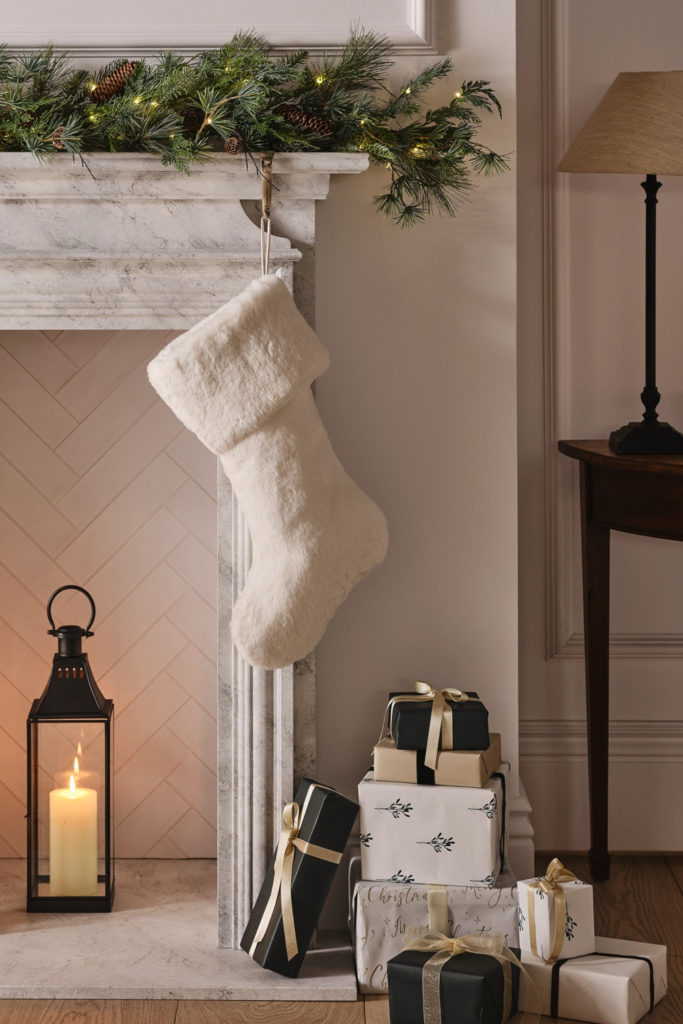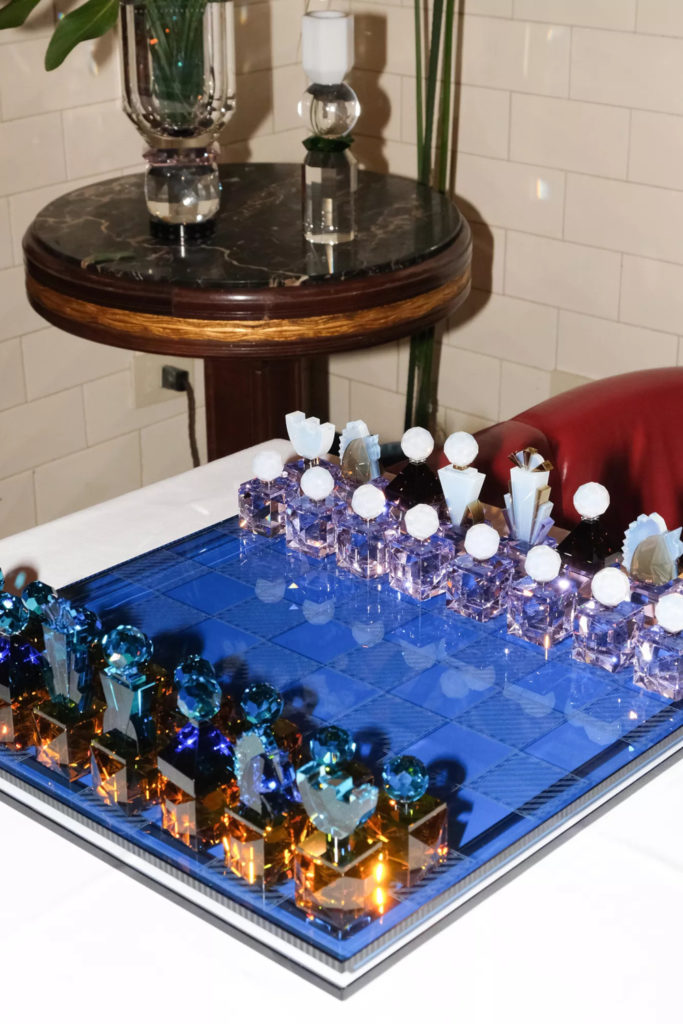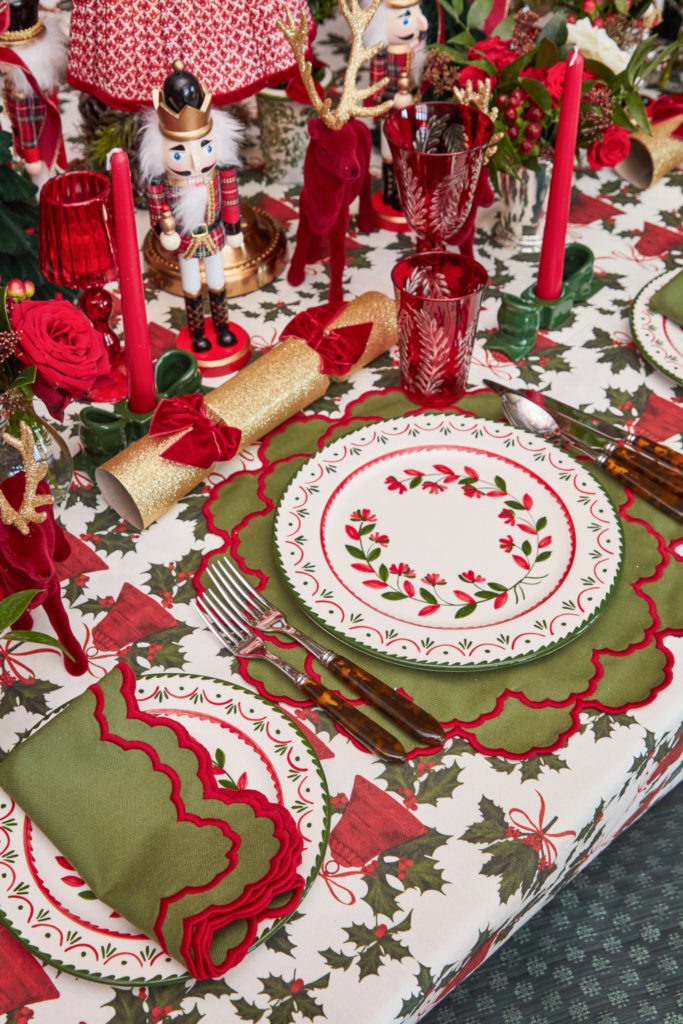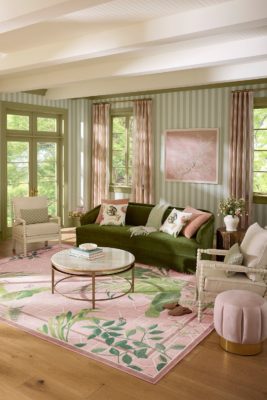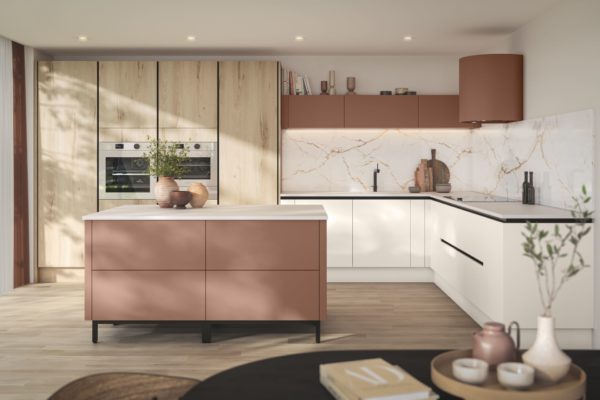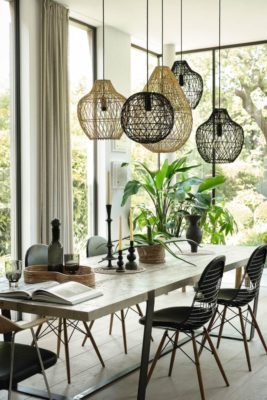What Does A Biophilic Kitchen Look Like?
By
6 months ago
Get ready to bring the outside in
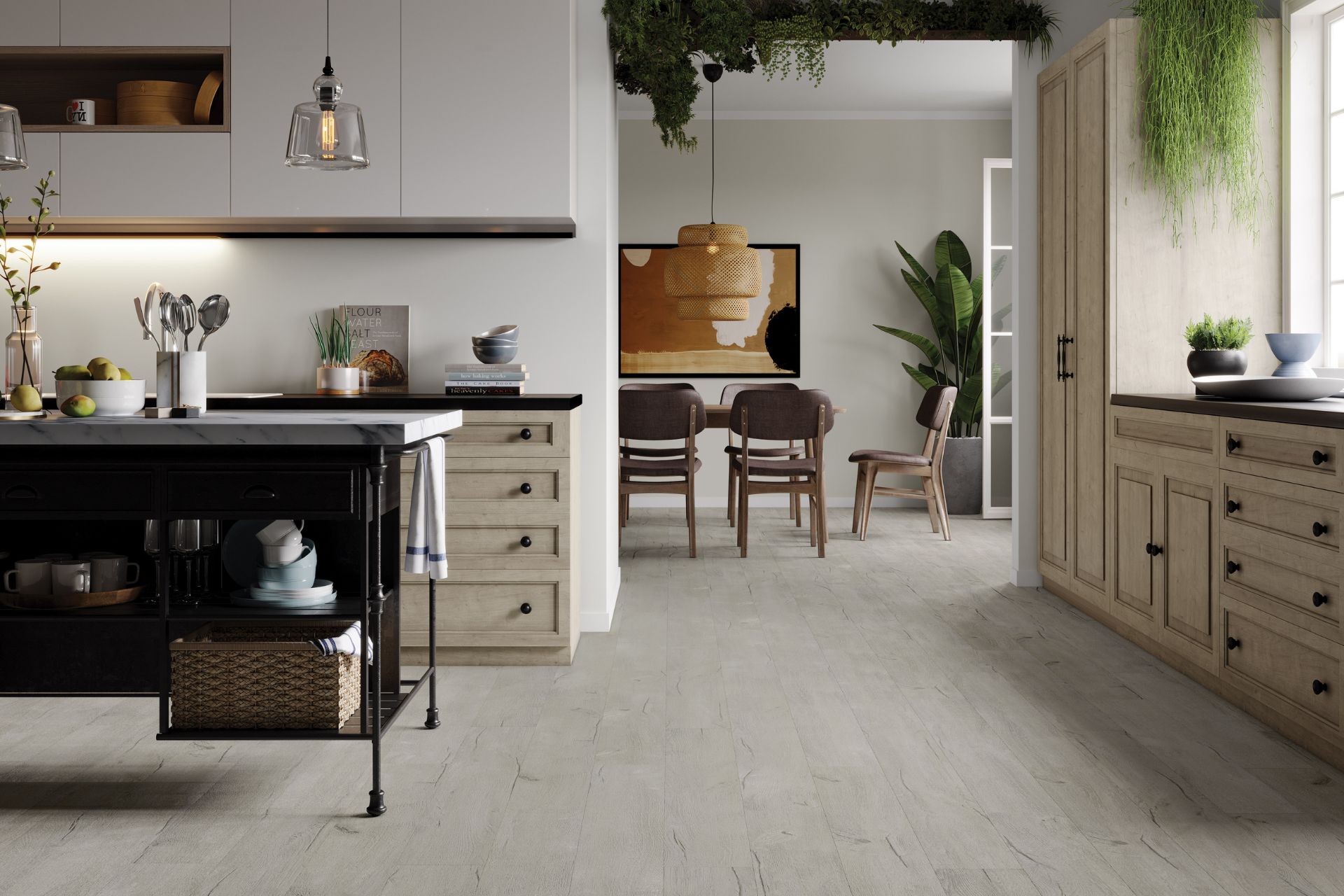
When it comes to kitchen trends, muted green tones and earthy textures have proved hugely popular over the past few months – but if you’re looking to make your space truly green, it all starts with biophilia. Here are a few biophilic kitchen ideas from the experts.
What Is Biophilic Design?
While it’s easy to reduce biophilic design down to a few houseplants and a dash of green paint, this is a philosophy that seeks to firmly reconnect us with the natural world.
‘Historically, modern human beings have only been office-bound or homebound for the past few hundred years max,’ founder of Biophilic Designs, Alexander Bond, told C&TH. ‘So when we reconnect with nature, it affects us on a deep, profound, molecular level.’
Since life is, for many of us, dominated by the buzz of a city and the glare of a screen, it’s becoming increasingly vital to create an environment that more closely resembles a natural habitat; think cleaner air quality, leafy views, and plenty of natural light. But how exactly do you bring these principles into your own home – and particularly into your kitchen? We asked the experts for some advice.
Biophilic Kitchen Ideas
‘The beauty of biophilic design lies in its ability to reflect outdoor landscapes,’ notes Debra Hutt, kitchen specialist at Wren Kitchens and Bedrooms. Creating a biophilic kitchen can start with simple changes to your decor, but it can also encompass larger updates like ‘wooden countertops, a pattern that mirrors the shapes of leaves, or large windows that invite sunlight and the changing seasons into your space.’
Calming Colours
Biophilia might relate to much more than greenery (and green paint), but Debra emphasises that both are still core aspects of biophilic design. ‘Green is, after all, perfect for setting a peaceful tone – much like the greens found in forests and foliage,’ she explains. ‘If you have a smaller kitchen, warm whites are fantastic, since they’ll mimic natural light and help open up the space.’
Just as calming, however, are earthy tones, which we’re seeing everywhere from kitchens to bathrooms this year. ‘Think soothing, nature-inspired hues like pebble grey and sage,’ says Debra. ‘Accent colours like terracotta, blush or rust will also add a touch of earthy charm.’
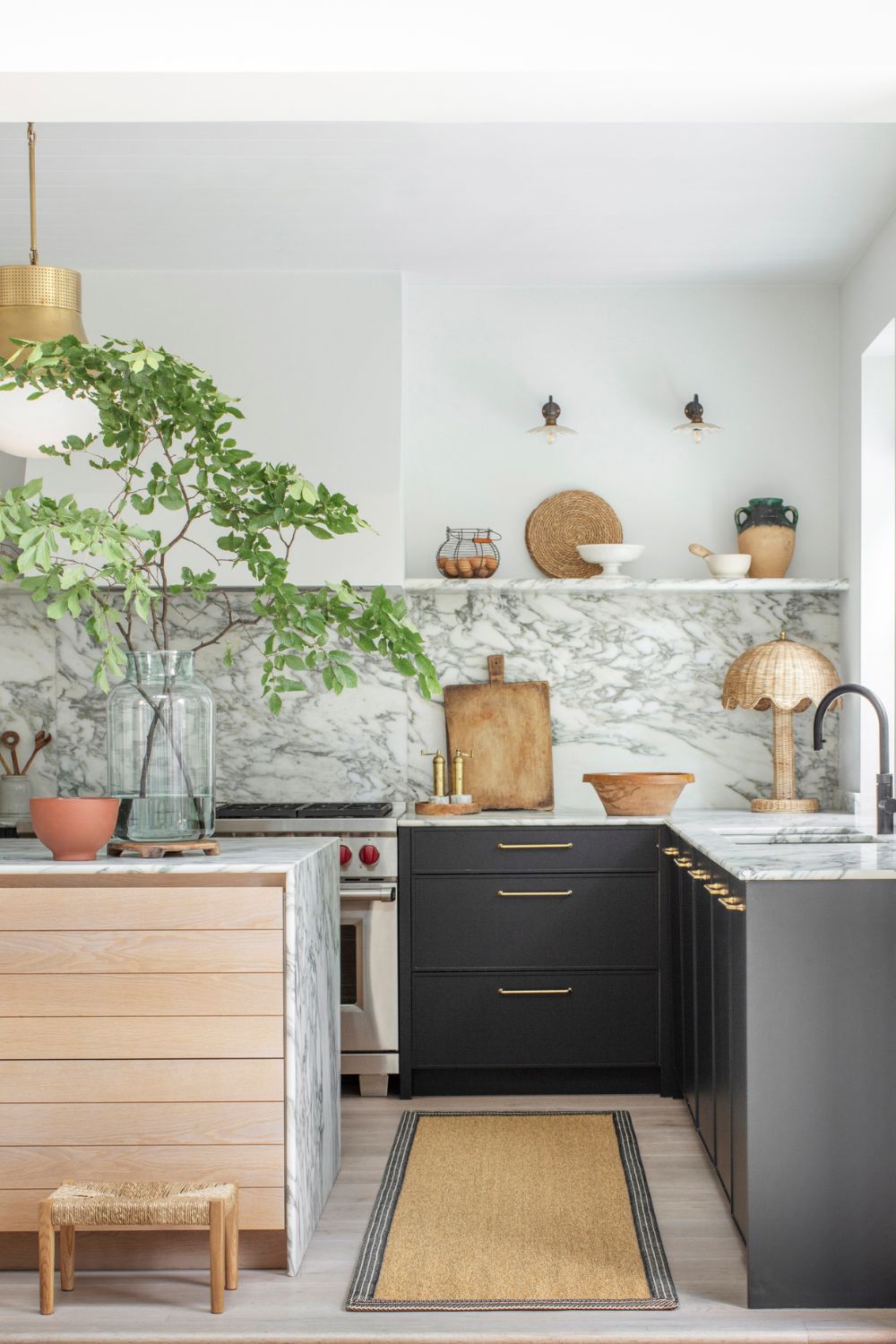
(c) Alternative Flooring
Soft Lighting
No harsh bulbs or cool overhead lights here – the secret to a biophilic kitchen lies in maximising natural light.
‘Ditch those heavy curtains and add light-filtering blinds or sheer curtains, which will allow sunlight to flood in,’ says Debra.
Struggling with a darker space? ‘Opt for warm-toned LEDs and try adding mirrored backsplashes or glossy tiles to maximise and bounce light around the room,’ Debra suggests. ‘Glass cabinet doors can also help reduce visual weight, keeping things feeling light and spacious.’
Natural Textures
Another classic biophilic element? Natural materials, of course.
‘Go for solid timber to add instant warmth to your space,’ says Debra. ‘Alternatively, choose granite and quartz if you’re after something a bit sleeker but still grounded in nature.’
Are synthetic finishes a lost cause? Not exactly, Debra reveals. ‘Even textured laminates can give that earthy, tactile feel without going full rustic,’ she reflects. ‘You’re just looking for a subtle nod to the outdoors.’
Greenery: The Best Low-Maintenance Kitchen Plants
Integral to any biophilic space is, of course, plants – but finding the right houseplants for your kitchen can feel like a challenge.
‘Geraniums and pelargoniums are perfect indoor plants, thriving with a bit of sunlight, good soil, and regular care,’ says Stars For Europe’s Dr Susanne Lux. Kitchen windowsills are also great places for indoor herb gardens: try mint, basil, chives, dill and lemon thyme. ‘Just remember to keep them watered, they can dry out quickly in the sun,’ Susanne notes.
If sunny windowsill space is at a premium, go for ‘low-light plants like jade plants, ivy, snake plants, or ZZ plants (Zamioculcas), which can all thrive without sunlight,’ Susanne advises. For a rustic flourish, show off your plants in wall-mounted shelves, upcycled jars and wine bottles, or even hanging baskets.
Featured image courtesy of Atkinson & Kirby. akirby.co.uk

